
![]()
~ THE FALSTAFF HOTEL ~
SIR JOHN FALSTAFF HOTEL
8 - 9 ST. DUNSTANS STREET Est. 1403
CANTERBURY
Still the Falstaff Hotel. Sir John Falstaff was a character in three of Shakespears plays.
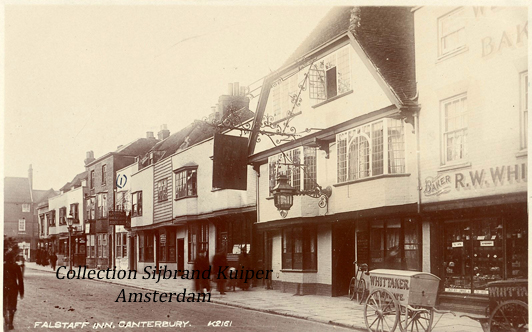
An old postcard of the Falstaff Hotel courtesy of Sijbrand Kuiper, Amsterdam Collection
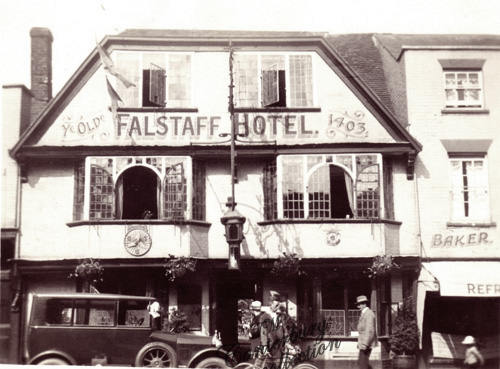
Two old photographs of the Falstaff Hotel from my collection
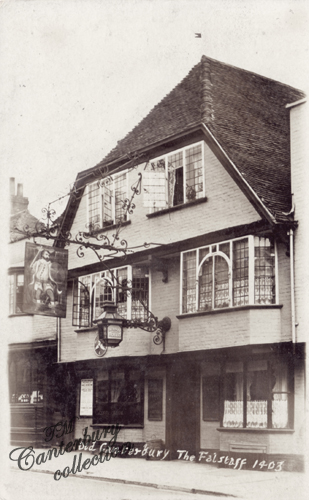
November 1795 - Death, November 25th, in the borough of Staplegate, Canterbury, Mr. John MARSH, formerly master of the Falstaff Inn, St. Dunstan's. KR

Likely this one was taken during Cricket week with all the banners
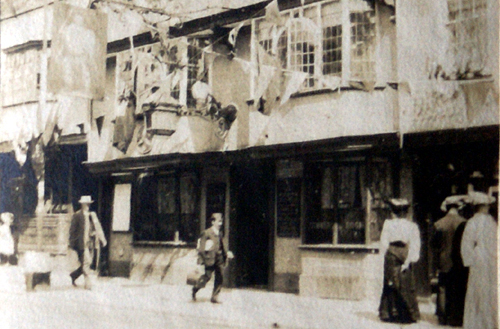
Unprecedented feat in the sporting world
Mr. Hutchinson, horse-dealer of Canterbury, on Thursday, May 6, 1819, undertook, for a wager of 600 guineas, to ride from Canterbury to London Bridge in the short space of three successive hours. He started from the Falstaff Inn, St. Dunstan's, at half past three o'clock, and accomplished his task in two hours, twenty-five minutes, and fifty-one seconds, being more than thirty-four minutes within the alloted time, without any accident or inconvenience to himself. After taking refreshment in town, he returned home by the Wellington coach, and arrived in Canterbury at a quarter before three, to dine with the respective parties concerned in the bet at the Rose Inn, where the greatest harmony prevailed; and the company, of which both parties concerned were present, unanimously voted that the Freedom of the City of Canterbury should be purchased, and presented to Mr. Hutchinson, in consideration of the extraordinary feet he had performed with a faithfulness as honourable to himself as it was satisfactory to every individual concerned in the match. At the end of each stage, Mr. Hutchinson dismounted by himself, and was assisted in remounting again; this he calculates occupied rather more than half a minute at each stage. The horse he rode from Brighton Hill to Beacon Hill, run out of the road at Preston Lane; that also, which he rode from Moor Street to Chatham Hill, made a bolt at Rainham, where he had been standing previous t the day; and the horse he rode from Welling to Blackheath, bolted twice going down Shooter's Hill, and again upon Blackheath, which occasioned a considerable loss of time. The horses rode on this occasion by Mr. Hutchinson and his companions on the respective stages, were the property of himself and his particular friends, and some of them were selected from the stud of the Wellington coach; all of them performed their journey apparently with as much ease as their rider, who considers that he could have returned to Canterbury the same day in three hours without inconvenience!
The following are the places at which he changed horses, and the time in which each stage was performed. (chart)
A striking likeness of Mr. Hutchinson, mounted on Starting Tom (a famous hunter, the property of Richard Pembroke, Esq. of Littlebourn Court) being the horse on which he started, is published, coloured from life, by Mr. Hudson, 84 Cheapside, price 7s. 6d. It is worthy of remark that Mr. Hutchinson had his watch fastened on the left sleeve of his jacket, in order that he might perceive how to regulate his exertions with ease to himself, and to accomplish his object with certainty. The watch, which was a most excellent one for keeping time, it appears, lost 15 minutes during his journey; this loss of time is attributed to the velocity of motion it must have experienced throughout this extraordinary feat.
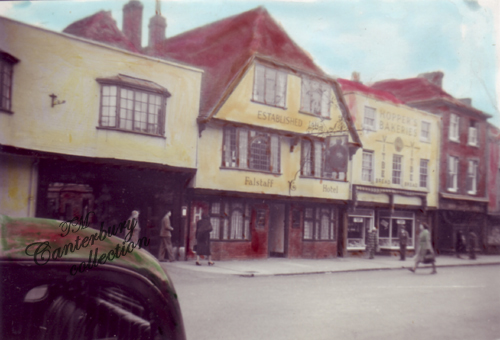
Falstaff Hotel and Hopper's Bakeries on the right, coloured photograph in my collection c. 1952
"....and so onto Canterbury, a city of memories, which happily retains many features of old English life that have not altogether vanished. Its grand cathedral, its churches, St. Augustine's College, its quaint streets, like Butchery Lane*, with their houses bending forward in a friendly manner to almost meet each other, as well as its old inns, like the "Falstaff" in High Street,** near West Gate, standing on the site of a pilgrim's inn, with its sign showing the valiant and portly knight, and supported by elaborate ironwork, its tiled roof and picturesque front, all combine to make Canterbury as charming a place of modern pilgrimage as it was attractive to the pilgrims of another sort who frequented its inns in days of yore."
from Vanishing England, P.H. Ditchfield 1910
*maybe this should be Mercery Lane
**should be St. Dunstan's street
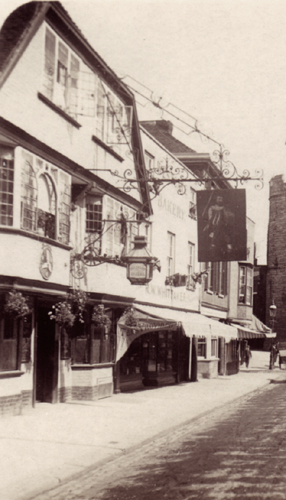
__
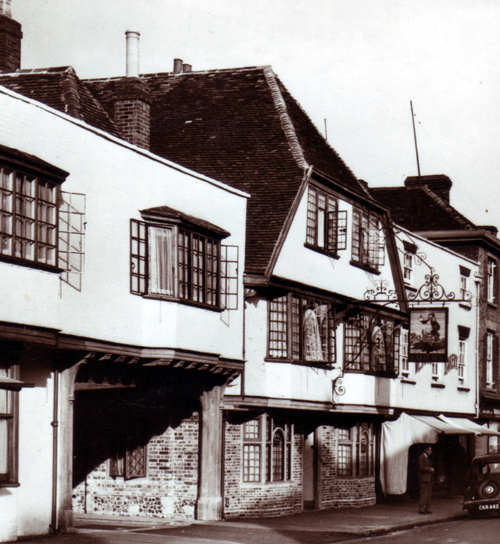
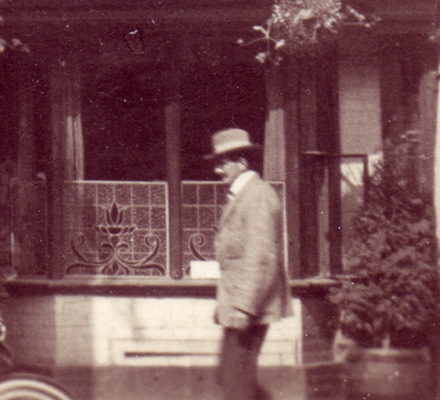
A detail from one of my photo's above
PROPRIETORS
1824 - Richard Foord
1882 - Mrs. Charlotte Ann Moore
1890's - Miss Sarah Hatton
1903 - William Lidington
1913 - William Trueman
1917 - 8, 9 St. Dunstan's Street, H. Kemp
1925 - C. D. Robertson
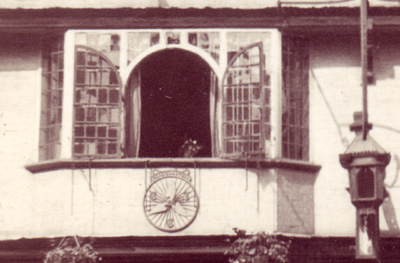
Detail from one of my photo's above
c. 1902 AD
Head Quarters of the C.T.C.
FALSTAFF
HOTEL
The Oldest Hotel in
Canterbury. Built 1403.
Westgate, Canterbury
Nearest Hotel to the South Eastern
Railway.
Proprietor.............W. Lidington.
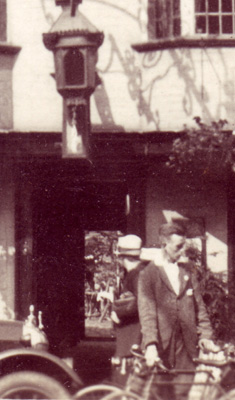
A detail from one of my photo's above
1925 AD
Phone 138.
FALSTAFF HOTEL,
CANTERBURY
Outside the Westgate. ________________Estd. 1403.
FAMILY and COMMERCIAL
FREE
(a drawing of the westgate) ____HOUSE
Famous Old Oak Dining Room
--------------------
Noted for
ITS GOOD OLD ENGLISH FARE
----------------------
Luncheons - Dinners - Teas
Wines and Spirits
WORTHINGTON'S ALES ON DRAUGHT.
Teas Served on the Lawn
--------------------
Proprietor - - - C.D. ROBERTSON
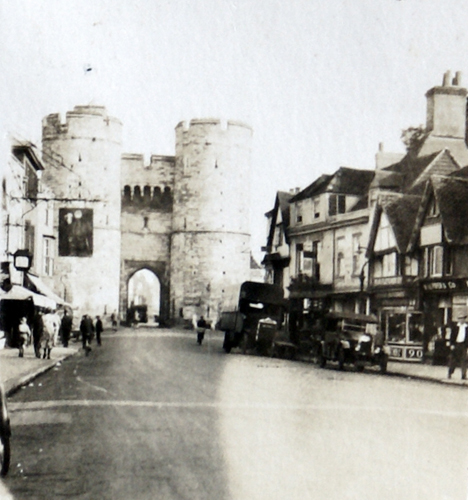
A detail from a photo in my collection of St. Dunstan's Street, with the Falstaff Hotel on the left
© T. Machado 2016